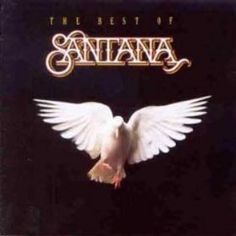 Musical Crossword Puzzles
Musical Crossword Puzzles
I’m kind of a music theory nut. I just like playing scales, and I enjoy the puzzle of figuring out what scale and what position works best on a particular song. Practicing scales has made me more confident when I’m improvising or trying to figure out a melody by ear.
Third Position
Popular songs are great examples to think about in terms of their scale position. Lately I’ve been calling 3rd position the “Carlos Santana position,” because the Dorian minor scale, easily played in 3rd position, is used on “Soul Sacrifice,” “Oye Como Va,” and other Santana classics. But third position isn’t just for psychedelic Latin blues-rock! It works over lots of minor-key songs.
Last Dance with Mary Jane
For example, the Tom Petty song “Last Dance with Mary Jane” has harp breaks in the key of A-minor. Based on my own listening and experimenting, I think his specific harp part is played on a G harp in 3rd position. Before we get to the specific riff, though, take a second and practice the scale:
-4 5 -5 6 -6 -7 7 -8 A B C D E F# G A
This pattern will give you a third position minor scale on any harmonica, but on a G harp, it gives you these specific note names in the key of A minor.
What About the Riff?
For the Mary Jane riff, aim for 6 draw and follow this pattern:
Draw
Blow-Draw-Blow
Draw-Blow-Draw
Move slightly left (lower in pitch) while following this breath pattern, and you’ll figure out the part by ear. Remember to check with the original so you know how it’s supposed to sound. Put on the recording, listen, then sing it back to yourself.
Learn the Scale!
I highly recommend learning the 3rd position minor scale, starting on 4 draw, ending on 8 draw, and playing it up and down, forward and backward. Why? Because it gives you a roadmap that will contain Mary Jane’s Last Dance and other songs played in 3rd position, so the next time you come across a minor-key song played in 3rd position, you’ll pick it up faster.
 More 3rd Position Songs
More 3rd Position Songs
With your G harmonica, you can jam along and even figure out melodies to the following songs:
Soul Sacrifice – Santana
Oye Como Va – Santana
Stairway to Heaven – Led Zeppelin
Moondance – Van Morrison
If you get deeply into these songs, you’ll notice that Stairway and Moondance have a few spots where 3rd position doesn’t fit. For those spots, maybe switch to a C harp and play 4th position. Or you could stay on the G harp and avoid the 7 draw at those moments.

 I got an email from a student recently – his band plays “Rolling in the Deep,” by Adele, in the key of C minor. What key harp to use?
I got an email from a student recently – his band plays “Rolling in the Deep,” by Adele, in the key of C minor. What key harp to use?